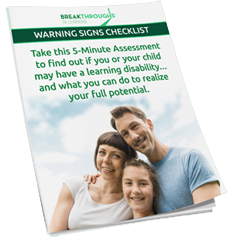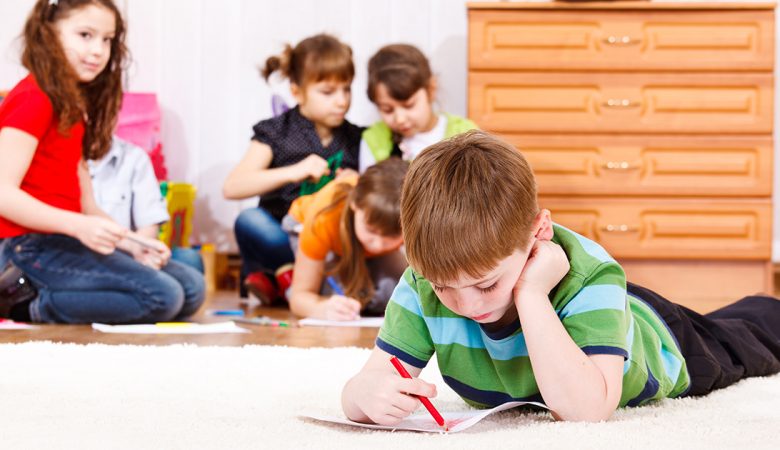
Does it affect life at home, at school or at work?
Take 5 minutes to complete the Warning Signs Checklist and discover whether you or your child could have learning difficulties that are impacting your life, and what to do about it.
Take The Free Warning Signs Checklist!
Social skills and comfort level with other people varies between individuals, including children. It can be discouraging if very outgoing parents find they have a quiet child or a child that seems to have no social interests. Parents may regard “quiet” or “withdrawn” behaviour as a sign that their child needs help socially, but social withdrawal needs to be regarded objectively.
Many of the children we work with at Breakthroughs in Learning need help developing social skills to successfully function in a social environment. However, it is important to discover the source of social problems that your child is experiencing before deciding on a course of action. Quiet does not always mean withdrawn: Children may relate to others in a different way and be very happy with that. However, if that quiet is accompanied by fear there may be a social withdrawal issue affecting quality of life.
Socially Withdrawn v. Just Quiet
Children who are merely quiet may be quite happy in their current social arrangements. They will still interact, by working on a LEGO project with another child or quietly reading as their company does the same, but will not have much to say. They may use primarily nonverbal communication—some may even have a close friend who reads their signals and speaks for them. With these functioning but quiet children, encouraging verbal communication is important to help prevent miscommunication and encourage independence. But, the silence is not a huge concern. That child may continue to be quiet due to personality, not dysfunction.
Socially withdrawn or anxious children may look on longingly as other children play because they wish to interact but are too scared to join in. They may show anxiety symptoms including no eye contact or facial expressions, along with periods of immobility or fidgeting when general social expectations arise. Some may avoid being touched or pull back when approached. Extreme symptoms on this spectrum may be related to Selective Mutism.
Selective Mutism
Selective Mutism is an anxiety disorder characterized by not speaking outside of the home. Children with Selective Mutism may also avoid speaking when there are unfamiliar adults around or when introduced to new settings. This diagnosis would be considered if these symptoms continue for more than one month. It is most noticeable when a child starts school, but symptoms actually arise between ages one and three and are often attributed to “just being shy”.
Children with Selective Mutism can understand spoken language and have the ability to speak, but they fear speaking and fear people they do not know well. It is linked to generalized anxiety, shyness, and social anxiety.
Helping Social Withdrawal
Selective Mutism is often treated by behaviour management therapy with goals involving positive reinforcement, desensitization, and motivation. Approaches are designed around the child and his or her sensitivities and involve small goals. Pressure to socialize through punishment, bribery, or other severe consequences has not proven to be effective.
The same approach can help children with less serious social withdrawal. Encouraging one-word responses and working up to sentences is a reasonable goal. Do not answer for a child; encourage one-word responses or even head nods to keep the child interacting. Offer support, for instance if a child expresses interest in a slumber party but feels hesitant, suggest they watch others before integrating. Do not protect the child from social circumstances, but do not force them either. If a child wants to attend the slumber party for two hours but go home afterwards, encourage this desire to socialize, but do not force an overnight stay before they express readiness.
The trick is to see the difference between social withdrawal (which limits children) and selective talking (which can be the child’s individual quirk) that is not socially limiting. If a child is avoiding social situations, feeling sad about a lack of friends, or exhibits nonverbal gestures suggesting fear, then looking into a referral for behaviour management therapy may help them gain control over anxiety and seek better social adjustment. If your child is actively attempting social interactions but lacks the social skills to be successful Breakthroughs in Learning can help, if that’s your child, contact us for more information about how we can help them be socially successful.
Stay tuned for next week’s blog where we will talk about how you as a parent or teacher can help reduce social anxiety.
Subscribe to our newsletter and receive regular articles and resources to help you or your child perform better at school, home or work.
suscribe now
Post Your Comment Below